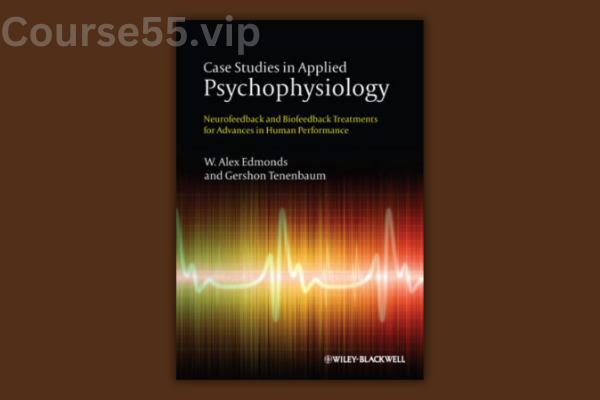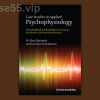Case Studies in Applied Psychophysiology: Neurofeedback and Biofeedback By Alex Edmonds
$95.00 Original price was: $95.00.$15.40Current price is: $15.40.
Case Studies in Applied Psychophysiology: Neurofeedback and Biofeedback – Digital Download!
Case Studies in Applied Psychophysiology: Neurofeedback and Biofeedback By Alex Edmonds
Overview

Comprehensive Review of “Case Studies in Applied Psychophysiology: Neurofeedback and Biofeedback”
The fields of psychophysiology, sports psychology, and counseling continue to evolve with advancements in neurofeedback (NFB) and biofeedback (BFB) techniques. Case Studies in Applied Psychophysiology: Neurofeedback and Biofeedback Treatments for Advances in Human Performance, edited by W. Alex Edmonds and Gershon Tenenbaum, stands as a critical resource for both practitioners and students. This book presents a collection of case studies that highlight the practical application of these methodologies, effectively bridging the gap between theory and practice. Through real-world examples, it serves as a guide for those looking to enhance human performance across diverse domains.
Understanding Neurofeedback and Biofeedback
Neurofeedback and biofeedback are psychological techniques that enable individuals to gain greater control over physiological functions, enhancing performance and well-being.
-
Biofeedback (BFB) – Utilizes electronic monitoring devices to provide feedback on physiological functions such as heart rate, muscle tension, and skin temperature, helping individuals regulate these processes.
-
Neurofeedback (NFB) – A specialized form of biofeedback focused on brain activity, where individuals learn to adjust their brainwave patterns to optimize cognitive and emotional states.
Beyond clinical applications, these techniques are widely used in performance-based fields. Athletes, musicians, and professionals in high-pressure industries integrate BFB and NFB to manage stress, improve focus, and maximize performance. For example, a professional athlete may use neurofeedback to fine-tune their mental state before competitions, demonstrating the broad applicability of these interventions.
Key Features of the Book
Case Studies in Applied Psychophysiology distinguishes itself through several notable features:
-
Diverse Case Studies – The book compiles case studies exploring human performance enhancement outside traditional clinical settings, offering insights into BFB and NFB applications in real-world contexts.
-
Bridging Theory and Practice – By intertwining theoretical principles with practical case examples, the book enhances practitioners’ understanding of how these techniques can be effectively adapted to individual performance needs.
-
Complexity of Implementation – The text highlights the intricate nature of BFB and NFB, emphasizing the necessity of expertise in hardware, software, psychology, and psychophysiology to tailor interventions effectively.
Challenges and Customization in Practice
Editors W. Alex Edmonds and Gershon Tenenbaum address the specific challenges faced in applied psychophysiology, such as performance anxiety in athletes or concentration difficulties in musicians. The case studies illustrate the importance of a customized approach, where interventions must be adapted to each client’s physiological and psychological profile.
For instance, one case details how a professional pianist overcame stage fright through targeted neurofeedback sessions, highlighting the direct connection between physiological regulation and performance anxiety. The book provides an in-depth look at the strategies used in each case, offering practitioners valuable insights into how BFB and NFB can be tailored to different needs.
Scientific Foundations Supporting the Techniques
The effectiveness of neurofeedback and biofeedback techniques is well-documented in research.
-
Neurofeedback and ADHD – A study by Hammond (2005) found that neurofeedback significantly improved attention and behavioral regulation in children with ADHD, demonstrating its potential as an intervention.
-
Biofeedback and Anxiety Reduction – Research by Telles et al. (2013) showed that biofeedback could effectively reduce anxiety and enhance emotional well-being, particularly in high-stress performance situations.
These foundational studies provide scientific validation for the case studies presented in the book, reinforcing the credibility of the methodologies discussed. By integrating empirical evidence, the book strengthens its practical applications with a solid research base.
Applications in Various Fields
The versatility of BFB and NFB techniques makes them valuable across multiple domains:
-
Sports Psychology – Athletes utilize these methods to enhance focus, reduce anxiety, and develop psychological resilience.
-
Performing Arts – Musicians and actors combat performance anxiety through targeted biofeedback interventions.
-
Corporate Settings – Professionals in high-stress environments employ neurofeedback to manage stress and improve cognitive function.
Each case study within the book demonstrates how BFB and NFB can be precisely tailored to meet the unique demands of different professions. This interdisciplinary approach adds significant value to practitioners working with diverse client populations.
Educational Value for Practitioners and Students
This book serves as both an introductory resource and an advanced guide for professionals looking to deepen their knowledge of applied psychophysiology. The structured case studies make it accessible to students, while experienced practitioners will find valuable insights into the practical applications of BFB and NFB.
Additionally, the text highlights the importance of integrating physiological and psychological frameworks to optimize treatment outcomes. This aligns with contemporary approaches in psychology that advocate for holistic interventions, equipping practitioners with the tools to address complex performance-related challenges.
The Role of Technology in Biofeedback and Neurofeedback
Advancements in technology have significantly enhanced the implementation of BFB and NFB, making these techniques more accessible and effective. The book explores the latest technological tools used in psychophysiological interventions:
-
EEG Neurofeedback Devices – EEG caps provide real-time brainwave monitoring, allowing practitioners to fine-tune neurofeedback training.
-
Wearable Biofeedback Tools – Handheld devices measuring heart rate variability and muscle tension empower users to engage in self-regulation practices.
With continuous technological advancements, the accessibility and effectiveness of these interventions will continue to grow, offering both new opportunities and challenges for practitioners.
Final Thoughts on “Case Studies in Applied Psychophysiology”
Case Studies in Applied Psychophysiology: Neurofeedback and Biofeedback is an essential resource for those seeking a deeper understanding of applied psychophysiology. By focusing on real-world applications, the book highlights the transformative power of BFB and NFB across multiple domains, from sports and performing arts to corporate environments. For practitioners and students looking to expand their expertise in biofeedback and neurofeedback, this book serves as a vital guide. Its well-structured case studies and research-backed insights offer a valuable foundation for advancing clinical practice and enhancing human performance.
Frequently Asked Questions:
Business Model Innovation: We operate a group buying strategy, allowing participants to share costs and access popular courses at reduced prices. This model benefits individuals with limited financial resources, despite concerns from content creators about distribution methods.
Legal Considerations: The legality of our operations involves complex issues. Although we don’t have explicit permission from course creators to resell their content, there are no specific resale restrictions stated at the time of purchase. This ambiguity creates an opportunity for us to provide affordable educational resources.
Quality Control: We ensure that all course materials purchased are identical to those offered directly by the creators. However, it’s important to understand that we are not official providers. As such, our offerings do not include:
– Live coaching calls or sessions with the course author.
– Access to exclusive author-controlled groups or portals.
– Membership in private forums.
– Direct email support from the author or their team.
We aim to reduce the cost barrier in education by offering these courses independently, without the premium services available through official channels. We appreciate your understanding of our unique approach.
Be the first to review “Case Studies in Applied Psychophysiology: Neurofeedback and Biofeedback By Alex Edmonds” Cancel reply
You must be logged in to post a review.

















Reviews
There are no reviews yet.